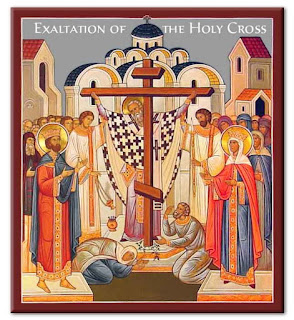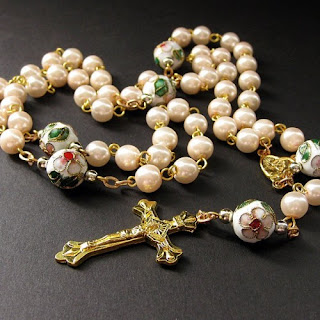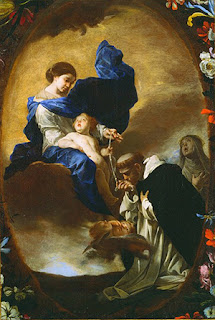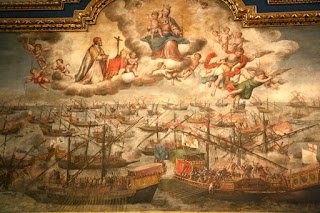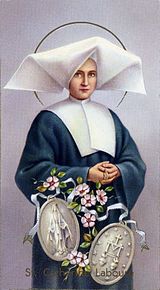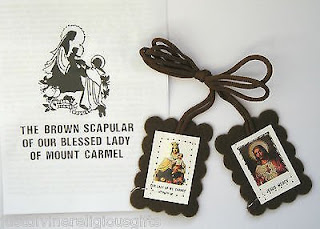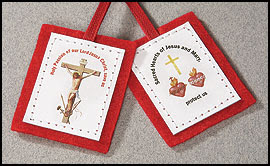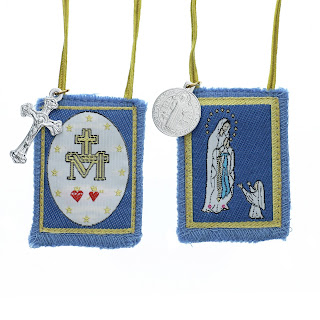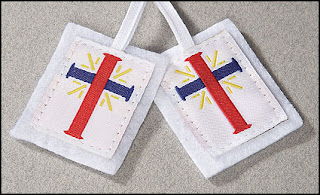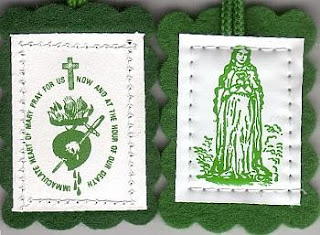We adore thee, O Christ, and we bless Thee,
Because by Thy Holy Cross You have redeemed the world.
By the sign of the holy Cross, deliver us from our enemies, O our God.
The Cross is my sure salvation.
The Cross it is that I worship evermore.
The Cross of our Lord is with me.
The Cross is my refuge.
PRAYER FOUND UNDER CHRIST SEPULCHRE
O God Almighty, who suffered death upon the cross, particularly for my sins, be with me.
Holy Cross of Jesus, have pity on me.
Holy Cross of Jesus, be my protector.
Holy Cross of Jesus, take away all bitter pains.
Holy Cross of Jesus, take away all evil.
Holy Cross of Jesus, let me walk in the way of salvation.
Preserve me from any temporal accidents, take away any danger of sudden death. I always adore the Holy Cross of Jesus Christ: Jesus of Nazareth crucified, have pity on me; make the spirit of evil leave me for all times.
O Mother of Perpetual Succour. I come before Thy Sacred picture and with a child-like conscience invoke thine aid. Show Thyself a Mother to me now. Have pity of me. O, dearest Mother of Perpetual Succour, for the love Thou bearest to Jesus and in honour of His Sacred Wounds, help me in this my necessity..
*Mention your intentions here…*
O Loving Mother, I leave all to thee in the Name of the Father. I leave all to thee in the Name of the Son. I leave all to thee in the Name of the Holy Spirit.
Our Lady of Perpetual Succour, pray for us.
Our Lady of Perpetual Succour, pray for us.
Our Lady of Perpetual Succour, pray for us.
Amen.
NOVENA PRAYER
Jesus, Who because of Thy burning Love for us
willed to be crucified
and to shed Thy Most Precious Blood
for the Redemption and Salvation of our souls,
look down upon us and grant the petition we humbly ask for
(our prayer intention here…)
Lord we trust completely in Thy Mercy.
Cleanse us from sin by Thy Grace,
sanctify our work,
give us and all those who are dear to us our daily bread,
lighten the burden of our sufferings,
bless our families,
and grant to the nations,
so sorely afflicted,
Thy Peace, which is the only True Peace,
so that by obeying Thy Commandments
we may come at last to the Glory of Heaven.
Amen
*LITANY OF THE HOLY CROSS*
Lord, have mercy.
Lord, have mercy.
Christ, have mercy.
Christ, have mercy.
Lord, have mercy.
Lord, have mercy.
Christ, hear us.
Christ, graciously hear us.
God the Father of heaven, have mercy on us.
God the Son, Redeemer of the world, have mercy on us.
God the Holy Ghost, have mercy on us.
Holy Cross, whereon the Lamb of God was offered for the sins of the world,
Deliver and save us.
Hope of Christians,
Save us, O Holy Cross*
Pledge of the resurrection from the dead,*
Shelter of persecuted innocence,*
Guide of the blind,*
Way of those who have gone astray,*
Staff of the lame,*
Consolation of the poor,*
Restraint of the powerful,*
Destruction of the proud,*
Refuge of sinners,*
Trophy of victory over hell,*
Terror of demons,*
Mistress of youth,*
Succor of the distressed,*
Hope of the hopeless,*
Star of the mariner,*
Harbor of the wrecked,*
Rampart of the besieged,*
Father of orphans,*
Defense of widows,*
Counsel of the just,*
Judge of the wicked,*
Rest of the afflicted,*
Safeguard of childhood,*
Strength of manhood,*
Last hope of the aged,*
Light of those who sit in darkness,*
Splendor of kings,*
Civilizer of the world,*
Buckler impenetrable,*
Wisdom of the foolish,*
Liberty of slaves,*
Knowledge of the ignorant,*
Sure rule of life,*
Heralded by prophets,*
Preached by apostles,*
Glory of martyrs,*
Study of anchorites,*
Chastity of virgins,*
Joy of priests,*
Foundation of the Church,*
Salvation of the world,*
Destruction of idolatry,*
Stumbling-block of the Jews,*
Condemnation of the ungodly,*
Support of the weak,*
Medicine of the sick,*
Health of the leprous,*
Strength of the paralytic,*
Bread of the hungry,*
Fountain of those that thirst,*
Clothing of the naked,*
Lamb of God, Who wast offered on the cross for the sins of the world,
Spare us, O Lord.
Lamb of God, Who wast offered on the cross for the sins of the world,
Graciously hear us, O Lord.
Lamb of God, Who wast offered on the cross for the sins of the world,
Have mercy on us.
Lord, have mercy.
Christ, have mercy.
Lord, have mercy.
V. We adore Thee, O Christ, and we bless Thee.
R. Because through Thy holy Cross Thou hast redeemed the world.
LET US PRAY:
O God, Who, for the redemption of the world, wast pleased to be born in a stable, and to die upon a cross; O Lord Jesus Christ, by Thy holy Sufferings, which we, Thy unworthy servants, devoutly call to mind, by Thy holy Cross, and by Thy Death, deliver us from the pains of hell, and vouchsafe to conduct us whither thou didst conduct the thief who was crucified with Thee. Who livest and reignest eternally in heaven.
Amen.
SPIRITUAL EXERCISE:
Kneel before the Cross and pray for all families. (mention your family and all families you know)
Remember in a special way all broken families and all families facing crises, difficulties, evil forces and manipulations.
Families looking up to God for the fruit of the womb.
Families facing financial problems and health challenges.
Families with stubborn and way ward children.
Make the sign of the Cross 3 times.
Ensure to buy a sacramental if you don’t have & encourage others to have a sacramental always. Cloth yourself with divine protection and enjoy the promises attached to it.
Origin of the Rosary
Tradition does hold that St. Dominic (d. 1221) devised the rosary as we know it.
Moved by a vision of our Blessed Mother, he preached the use of the rosary in his missionary work among the Albigensians, a group of fanatical heretics. The Albigensians, named after the town of Albi in southern France where they lived, believed that everything material was evil and everything spiritual was good. For this reason, they denied the incarnation of our Lord; for them, Jesus the true God becoming also true man and accepting our human nature was simply unthinkable.
Following this teaching, each person’s soul was imprisoned in the evil body. Therefore, they abstained from marital love, because no one should imprison another soul in a body. Their greatest act of religion was called “the endura,” an act of suicide which freed the soul from the body. They also fought against any authority that represented a kingdom of this world, assassinating royal and Church officials alike. The Church condemned these heretics, and St. Dominic tried to convert them through reasonable preaching and genuine Christian love. Unfortunately, royal authority was less compassionate.
The rosary is one of the most cherished prayers of our Catholic Church.
Introduced by the Creed, the Our Father, three Hail Marys and the Doxology (“Glory Be”), and concluded with the Salve Regina, the rosary involves the recitation of five decades consisting of the Our Father, 10 Hail Marys, and the Doxology. During this recitation, the individual meditates on the saving mysteries of our Lord’s life and the faithful witness of our Blessed Mother. Journeying through the Joyful, Luminous, Sorrowful and Glorious mysteries of the rosary, the individual brings to mind our Lord’s incarnation, His public ministry, His passion and death, and His resurrection from the dead.
In so doing, the rosary assists us in growing in a deeper appreciation of these mysteries, in uniting our lives more closely to our Lord and in imploring His graced assistance to live the faith. We also ask for the prayers of our Blessed Mother, the exemplar of faith, who leads all believers to her Son.
The origins of the rosary are “sketchy” at best. The use of “prayer beads” and the repeated recitation of prayers to aid in meditation stem from the earliest days of the Church and has roots even in pre-Christian times. Evidence exists from the Middle Ages that strings of beads were used to help a person count the number of Our Fathers or Hail Marys recited.
Actually, these strings of beads became known as Paternosters, the Latin for “Our Father.” For example, in the 12th century, to help the uneducated better participate in the liturgy, the recitation of 150 Our Fathers served as a substitute for the 150 Psalms, and became known as “the poor man’s breviary.”
In 2002, our beloved late Holy Father, Pope John Paul II, instituted the luminous mysteries: Baptism at the Jordan, Wedding Feast of Cana, Proclamation of the Kingdom of God, Transfiguration and Institution of the holy Eucharist. Also, after the apparitions of Our Lady at Fatima in 1917, the prayer Mary taught to the children has generally been added at the end of each decade: “O my Jesus, forgive us our sins, save us from the fires of hell. Lead all souls to heaven, especially those in greatest need of Thy mercy.”
Thee Battle of Lepanto
Our Lady of the Rosary October 7
In the history of naval warfare, Lepanto marks the last major engagement in the Western world to be fought almost entirely between rowing vessels, namely the galleys and galeasses which were the direct descendants of ancient trireme warships. The battle was in essence an “infantry battle on floating platforms”. It was the largest naval battle in Western history since classical antiquity, involving more than 400 warships.
In a.d. 622, Mohammed set out from Medina to conquer the whole Christian world for Allah by force of arms. Within a hundred years, his successors had occupied and pillaged every Christian capital of the Middle East, from Antioch through North Africa (home of Saint Augustine) and Spain. All that remained outside Allah’s reign was the northern arc from Southern France to Constantinople.
What we are seeing in 2019 has a history of more than 1,300 years — a very bloody, terror-ridden history. Except that today the struggle is far, far more secular than religious — a war over political institutions and systems of law, with almost no public argument over religious doctrine.
The story of the feast of Our Lady of the Rosary is an interesting one. In the 16th century Pope Pius V was having trouble with the Ottoman Turks, who were a real danger to Christianity. After months of disagreements and bickering, he was able to unite Spain, Venice, and the States of the Church in a naval expedition to fight the Turks.
The two navies met in the Gulf of Lepanto in Greece on October 7, 1571. On the same day, the Rosary Confraternity of Rome was meeting at the Dominican headquarters there. The group recited the Rosary for the special intention of the Christians at battle.
Pope Pius V, whose treasury bankrolled part of this military endeavor, ordered the churches of Rome opened for prayer day and night, encouraging the faithful to petition the intercession of the Blessed Virgin Mary through the recitation of the Rosary.
The Christians defeated the Turks in a spectacular victory and believed it was the intercessory power of the Blessed Virgin that won the victory. Pope Pius V dedicated the day as one of thanksgiving to Our Lady of Victory. Pope Gregory XIII later changed the name to the feast of Our Lady of the Rosary. The story of the feast of Our Lady of the Rosary focuses on the intercessory power of Mary.
It shows that when Christians are in danger, they can go to Mary. And when an individual is in pain, discouraged, or having trouble accepting God’s will, he or she can also go to Mary. She will pray to her Son for anyone who calls on her. Anyone who prays to Mary no longer feels alone because she prays with them and for them. Mary encouraged praying the Rosary in her apparitions. At Lourdes when she appeared to Saint Bernadette, Mary had a Rosary. As Bernadette prayed it, Mary joined in on the Glory Be prayers. At Fatima Mary exhorted the three children who saw her to pray the Rosary for peace.
The Miraculous Medal
(French: Médaille miraculeuse), also known as the Medal of Our Lady of Graces, is a devotional medal, the design of which was originated by Saint Catherine Labouré following her apparitions of the Blessed Virgin Mary in Rue du Bac, Paris, France, and made by goldsmith Adrien Vachette.
According to the teaching of the Catholic Church, the use of sacramentals such as this medal prepares people to receive grace and disposes them to cooperate with it.
Catherine Labouré stated that on 19 July 1830, the eve of the feast of Saint Vincent de Paul, she woke up after hearing the voice of one child calling her to the chapel, where she heard the Virgin Mary say to her, “God wishes to charge you with a mission. You will be contradicted, but do not fear; you will have the grace to do what is necessary. Tell your spiritual director all that passes within you. Times are evil in France and in the world.”
On 27 November 1830 Catherine reported that the Blessed Mother returned during evening meditations. She displayed herself inside an oval frame, standing upon a globe. She wore many rings set with gems that shone rays of light over the globe. Around the margin of the frame appeared the words Ô Marie, conçue sans péché, priez pour nous qui avons recours à vous (“O Mary, conceived without sin, pray for us who have recourse to thee”). As Catherine watched, the frame seemed to rotate, showing a circle of twelve stars, a large letter M surmounted by a cross, and the stylized Sacred Heart of Jesus crowned with thorns and Immaculate Heart of Mary pierced with a sword.
Asked why some of the gems did not shed light, Mary reportedly replied, “Those are the graces for which people forget to ask.” Sister Catherine then heard the Virgin Mary ask her to take these images to her father confessor, telling him that they should be put on medallions, and saying “All who wear them will receive great graces.”
Sister Catherine did so, and after two years of investigation and observation of Catherine’s ordinary daily behavior, the priest took the information to his archbishop without revealing Catherine’s identity. The request was approved and medallions were designed and produced through goldsmith Adrien Vachette.
The chapel in which Saint Catherine experienced her visions is located at the mother house of the Daughters of Charity in Rue du Bac, Paris. The incorrupt bodies of Saint Catherine Labouré and Saint Louise de Marillac, a co-founder of the Congregation of the Daughters of Charity of Saint Vincent de Paul, are interred in the chapel, which continues to receive daily visits from Catholic pilgrims today.
Pope John Paul II used a slight variation of the reverse image as his coat of arms, the Marian Cross, a plain cross with an M underneath the right-hand bar (which signified the Blessed Virgin at the foot of the Cross when Jesus was being crucified).
With the permission of the Catholic Church, the first medals were made and distributed in Paris in 1832. Although it was originally known as the Medal of the Immaculate Conception, it was associated with so many miracles and blessings, that it became known as the Miraculous Medal. And many Christians who have them, today, still experience grace-filled blessings and miracles.
ORIGIN OF THE SCAPULAR
The scapular originates in the habits worn by the monastic orders, beginning with the Benedictines, and later adapted by many other religious communities. Basically, the scapular is a piece of cloth, about chest-wide from shoulder to shoulder, and drapes down the front and the back of the person with an opening for the head. At first, the scapular served more as an apron worn during work, especially farm work; consequently, the Rule of St. Benedict identified it as the “scapulare propter opera” (“the scapular because of works”).
After the ninth century, a monk received the scapular after the profession of vows, and it became known as “the yoke of Christ” (iugum Christi) and “the shield of Christ” (scutum Christi). While certain modifications were made by the various communities, the scapular was a distinctive part of the religious habit.
Eventually, these smaller versions of the scapular became even more popular among the laity. To date, the Church has approved 18 different scapulars, distinguished by color, symbolism, and devotion. Most scapulars still signify a person’s affiliation with a particular confraternity, at least loosely. The following is a brief description of the six most popular ones:
The brown scapular of Our Lady of Mount Carmel.
This scapular is the best known and most popular of the different scapulars. According to tradition, our Blessed Mother appeared to St. Simon Stock at Cambridge, England on Sunday, July 16, 1251. (In our liturgical year, July 16th is the feast day for Our Lady of Mount Carmel.) She presented him with the scapular and said, ‘Take, beloved son, this scapular of thy order as a badge of my confraternity and for thee and all Carmelites a special sign of grace; whoever dies in this garment, will not suffer everlasting fire. It is the sign of salvation, a safeguard in dangers, a pledge of peace and of the covenant.”
In this apparition and gift, our Blessed Mother promised a special protection for all members of the Carmelite Order, and a special grace at the hour of death to all who wear the scapular so that they would not perish in Hell but would be taken up to Heaven by her on the first Saturday after their death. (Note that the Church does not teach that wearing a scapular is some sure ticket to Heaven; rather, we must strive to be in a state of grace, implore our Lord’s forgiveness, and trust in the maternal aid of our Blessed Mother– all positive acts of a person who wears a scapular sincerely.)
The red scapular of Christ’s Passion.
In 1846, Christ appeared to a Daughter of Charity of St. Vincent de Paul and presented a red scapular: One side depicts our crucified Lord with the implements of the passion at the foot of the cross; around the image is the inscription, “Holy Passion of Our Lord Jesus Christ, save us.” On the other side, the Hearts of Jesus and Mary are depicted, with the surrounding inscription, “Sacred Hearts of Jesus and Mary, protect us.” Christ promised that all who wear this scapular on every Friday would have a great increase of faith, hope, and charity. This apparition was repeated several times, and On June 25, 1847, Pope Pius IX formally approved the scapular and granted permission for its blessing and investiture.
The black scapular of the Seven Sorrows of Mary. After Pope Alexander IV’s formal establishment of the Servite Order in 1255, lay men and women formed a confraternity in honor of the seven sorrows of Mary. As a sign of membership, they wore a black scapular, usually with an image of our Mother of Sorrows on the front.
The blue scapular of the Immaculate Conception. In 1581, Venerable Ursula Benicasa, foundress of the Order of Theatine Nuns, had a vision of our Lord who revealed to her the habit and scapular her community was to wear in honor of the Immaculate Conception. Venerable Ursula implored our Lord to grant the same graces to the faithful who would wear a small, light blue scapular, bearing on one side the image of the Immaculate Conception and on the other the name “Mary.” In 1671, Pope Clement X granted permission to bless and invest people with this scapular. Later in 1894, a Confraternity of the Immaculate Conception of the Blessed Virgin and Mother of God, Mary was established for all who wear this scapular.
The white scapular of the Holy Trinity. When Pope Innocent III approved of the order of the Trinitarians on January 28, 1198, an angel appeared to him, wearing a white garment on which was a cross formed of a blue horizontal bar and a red vertical bar. This garment became the habit of the Trinitarians, and eventually was the model for the scapular worn by the lay people who became members of the Confraternity of the Most Blessed Trinity.
The green scapular. In 1840, our Blessed Mother gave the green scapular of the Immaculate Heart of Mary to Sister Justine Bisqueyburu, a Daughter of Charity of St. Vincent de Paul. She belonged to the same community as St. Catherine Laboure, to whom our Blessed Mother had manifested the Miraculous Medal ten years earlier. This green scapular has the image of the Immaculate Heart of Mary on one side, and the image of the Immaculate Heart itself, pierced by a sword, surrounded by the inscription, “Immaculate Heart of Mary, pray for us now and at the hour of our death.” This scapular can simply be blessed by a priest, and then worn, or placed in one’s clothing, on the bed, or in the room. Pope Pius IX approved the green scapular in 1863 and again in 1870.
Perhaps the best way to appreciate the wearing of a scapular is to reflect on the Prayer of Blessing offered in the The Roman Ritual: “O God, the author and perfecter of all holiness, you call all who are reborn of water and the Holy Spirit to the fullness of the Christian life and the perfection of charity. Look with kindness on those who devoutly receive this scapular (in praise of the Holy Trinity or in honor of Christ’s passion or in honor of the Blessed Virgin Mary). As long as they live, let them become sharers in the image of Christ your Son and, after they have fulfilled their mission on earth with the help of Mary, the Virgin Mother, receive them into the joy of your heavenly home.” The key to this devotion is not simply the wearing of a piece of cloth, but the spiritual conversion it signifies. Amen🙏🏼
Pls Share
In the name of the Father, and of the Son and of the Holy Spirit. Amen
